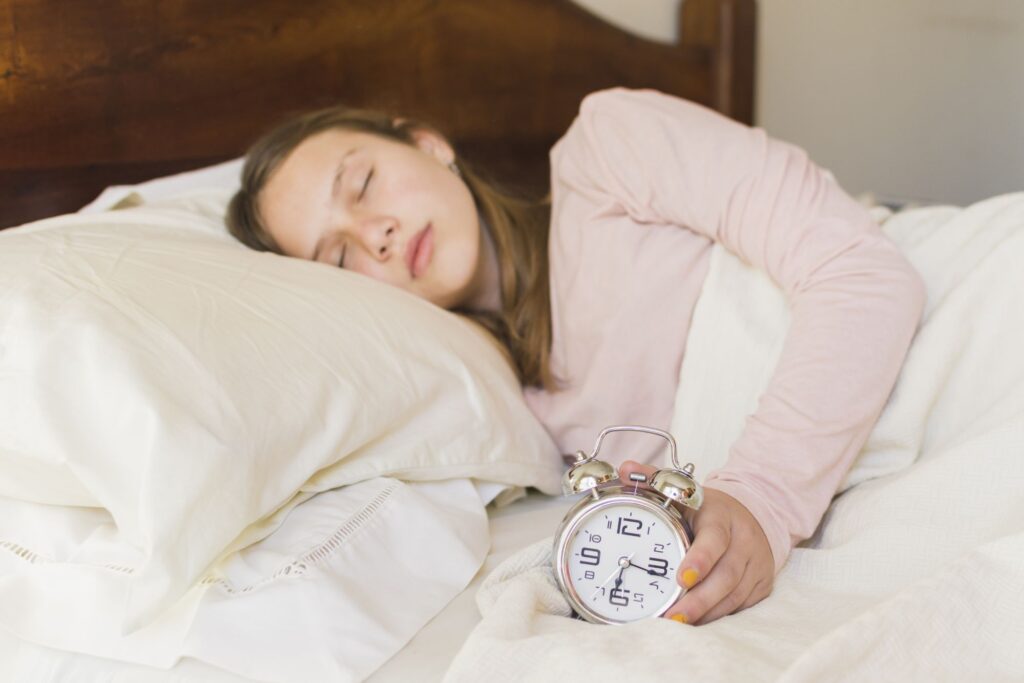INTRODUCTION
Getting babies to fall asleep quickly can be a challenge for many parents. With their boundless energy and curious minds, bedtime can quickly turn into a nightly struggle. Making sure your baby gets enough sleep is crucial to their growth, development and overall well-being. Here, we’ll explore effective strategies to help your kids fall asleep faster and create a peaceful and relaxing bedtime experience for the whole family.
Establish a Consistent Bedtime Routine
One of the most effective ways to help your child fall asleep quickly is to establish a regular bedtime routine. A predictable sequence of activities signals your child’s body that it’s time to fall asleep and get ready for sleep. Here are some key elements to include:
1. Set a Regular Bedtime
Setting a bedtime each night helps regulate your child’s internal clock. Aim for the same amount of time each night, even on weekends, to maintain a consistent sleep pattern.
2. Create a Calm Environment
About an hour before bed, start creating a calm environment. Dim the lights and lower the noise level. This helps signal to your child’s brain that it’s time to relax.
3. Bath Time
A warm bath can be very relaxing for babies. Changes in body temperature after bathing can also make them feel sleepy.
4. Reading Together
Reading a bedtime story can be a soothing activity that helps calm your child. Choose calm and gentle stories and avoid exciting or scary stories that may make it difficult for them to fall asleep.
Encourage Relaxing Activities
Incorporate activities into your child’s bedtime routine that promote relaxation and reduce stress. Here are some ideas:
1. Gentle Yoga or Stretching
Simple yoga poses or gentle stretching can help relax your child’s muscles and mind. There are many kid-friendly yoga routines available that you can do together.
2. Deep Breathing Exercises
Teach your child deep breathing exercises. Breathing deeply and slowly can help calm their nervous system and prepare their body for sleep.
3. Listen to Soothing Music
Playing soft, soothing music or nature sounds can create a calming atmosphere. There are countless playlists and apps designed specifically to help babies sleep.
Limit Stimulants and Screen Time
Exposure to screens and certain foods and drinks can interfere with your child’s ability to fall asleep. Here are some tips to minimize these obstacles:
1. Reduce Screen Time Before Bed
Blue light emitted by screens can interfere with the production of melatonin, the hormone that regulates sleep. Encourage your child to avoid screens (including TVs, tablets and smartphones) for at least an hour before bedtime.
2. Watch Their Diet
Avoid giving your child caffeinated drinks or sugary snacks in the evening. These can act as stimulants and make it difficult for them to fall asleep. If you’re hungry before bed, choose a light, healthy snack.
Create a Sleep-Friendly Environment
A comfortable sleep environment is crucial to helping your baby fall asleep quickly. Here’s how to create the ideal sleep setting:
1. Comfortable Bedding
Make sure your child’s bed is comfortable. The mattress should be supportive and pillows and blankets should be comfortable and appropriate for the season.
2. Optimal Room Temperature
Keep the room at a cool, comfortable temperature. A slightly cooler room is generally better for sleep, as it mimics the normal drop in body temperature during sleep.
3. Block Out Light and Noise
Consider using blackout curtains to keep the room dark and use a white noise machine or fan to block out any disturbing noises.
Address Sleep Anxiety
If your child struggles with anxiety or fear at bedtime, it can significantly affect their ability to fall asleep. Here are some tricks to help:
1. Talk About Their Day
Spend a few minutes talking with your child about their day. Allow them to share any worries or concerns. This can help them feel more secure and ready for sleep.
2. Use Comfort Objects
A favorite stuffed animal or blanket can provide a sense of comfort and security for your child as they fall asleep.
3. Practice Positive Imagery
Encourage your child to imagine a happy and peaceful place. This positive image can help them relax and shift their focus away from any anxiety or stress.
Monitor and Adjust as Needed
Every child is different, so it’s important to monitor your child’s sleep patterns and adjust your approach as needed. Here are some additional tips:
1. Keep a Sleep Diary
Track your child’s sleep habits in a diary. Note the time they go to bed, how long it takes them to fall asleep, and any nighttime awakenings. This can help you identify patterns and make necessary adjustments.
2. Be Patient and Consistent
It may take some time for your child to adjust to a new bedtime routine. Be patient and consistent with the techniques you use, and give them time to become part of their nightly routine.
3. Seek Professional Help if Needed
If your child continues to have difficulty falling asleep despite your best efforts, it may be helpful to consult with a pediatrician or a sleep specialist. They can provide additional guidance and identify any underlying issues that may be affecting your child’s sleep.
Conclusion
Helping your kids fall asleep faster involves creating a consistent and calming bedtime routine, encouraging relaxing activities, limiting stimulants and screen time, creating a sleep-friendly environment, addressing sleep anxiety, and monitoring their sleep patterns. By implementing these strategies, you can create a peaceful bedtime experience that promotes better sleep for your child. A well-rested child is a happier, healthier child, ready to take on the day with energy and enthusiasm.

Weight Loss Exercises at Home
INTRODUCTION In today’s fast-paced world, finding time to go to the gym can be challenging. However, that doesn’t mean you can’t achieve your fitness

Healthy Lifestyle Tips: A Comprehensive Guide to Better Living
INTRODUCTION Living a healthy lifestyle is more than just a trend; it’s a commitment to improving your overall well-being and longevity. With the rise of

The Stark Reality of Work Depression and Death in India
INTRODUCTION Job depression is a silent epidemic that is sweeping many parts of the world and India is no exception. The modern work environment, economic

The Milestone of Modern Medicine: The First Successful Human Head Transplant
INDRODUCTION In the ever-evolving field of medical science, breakthrough achievements constantly reshape our understanding of what is possible. One of the most amazing and controversial

How to Boost Your Brain Power: Proven Strategies for Mental Clarity and Focus
INTRODUCTION In today’s fast-paced world, maintaining optimal brain health is more important than ever. Whether you’re a student cramming for exams, a professional juggling multiple

The Ultimate Guide to an Effective Skin Care Routine At Home
INDRODUCTION In the pursuit of glowing and healthy skin, an effective skin care routine is paramount. With the plethora of products and advice available, understanding

Weight Loss Exercises at Home

Healthy Lifestyle Tips: A Comprehensive Guide to Better Living

The Stark Reality of Work Depression and Death in India

The Milestone of Modern Medicine: The First Successful Human Head Transplant

How to Boost Your Brain Power: Proven Strategies for Mental Clarity and Focus



